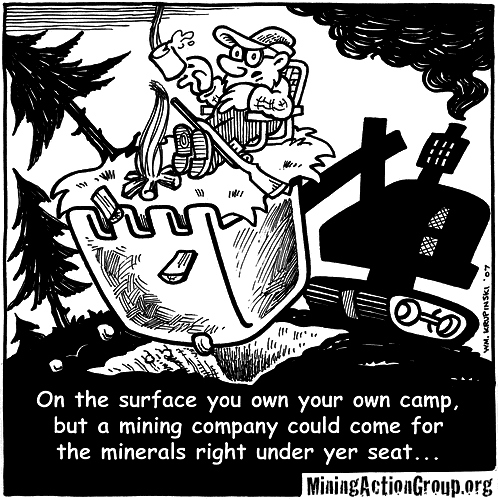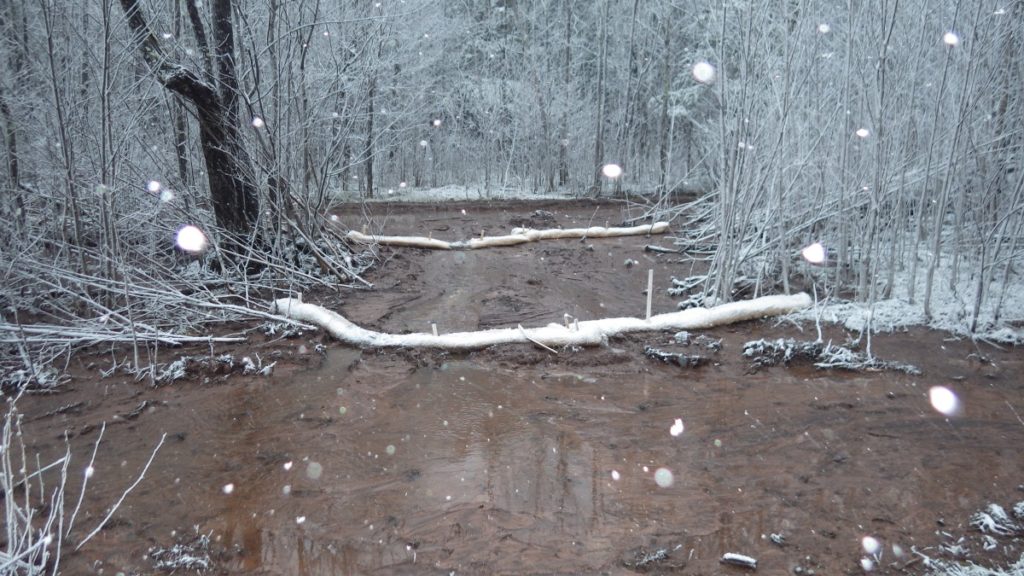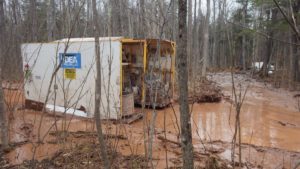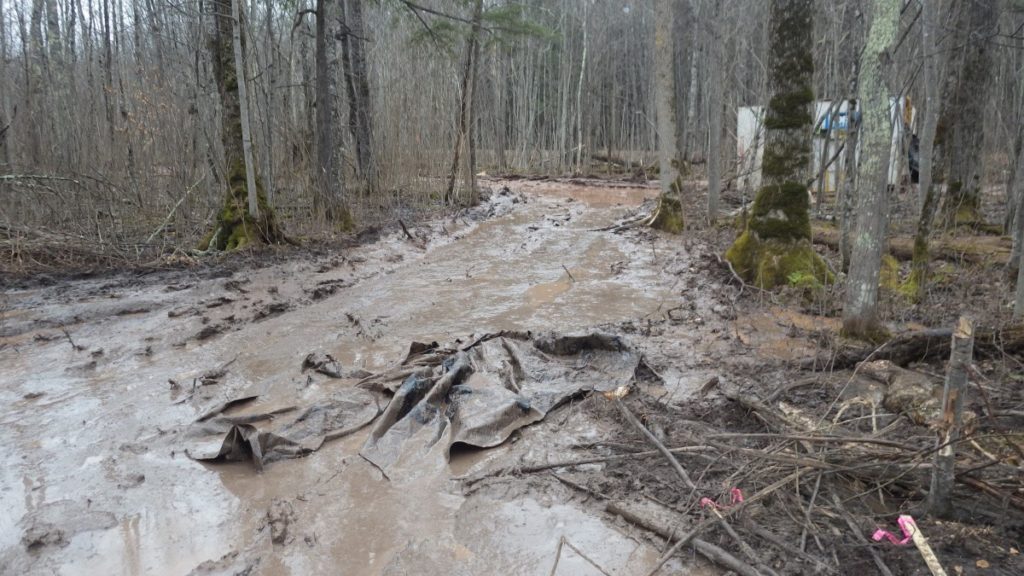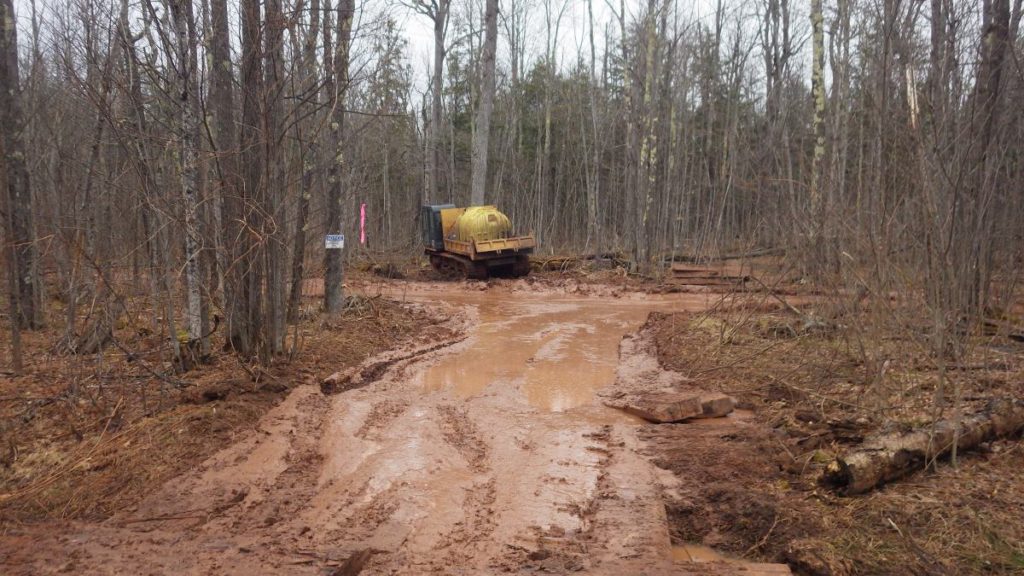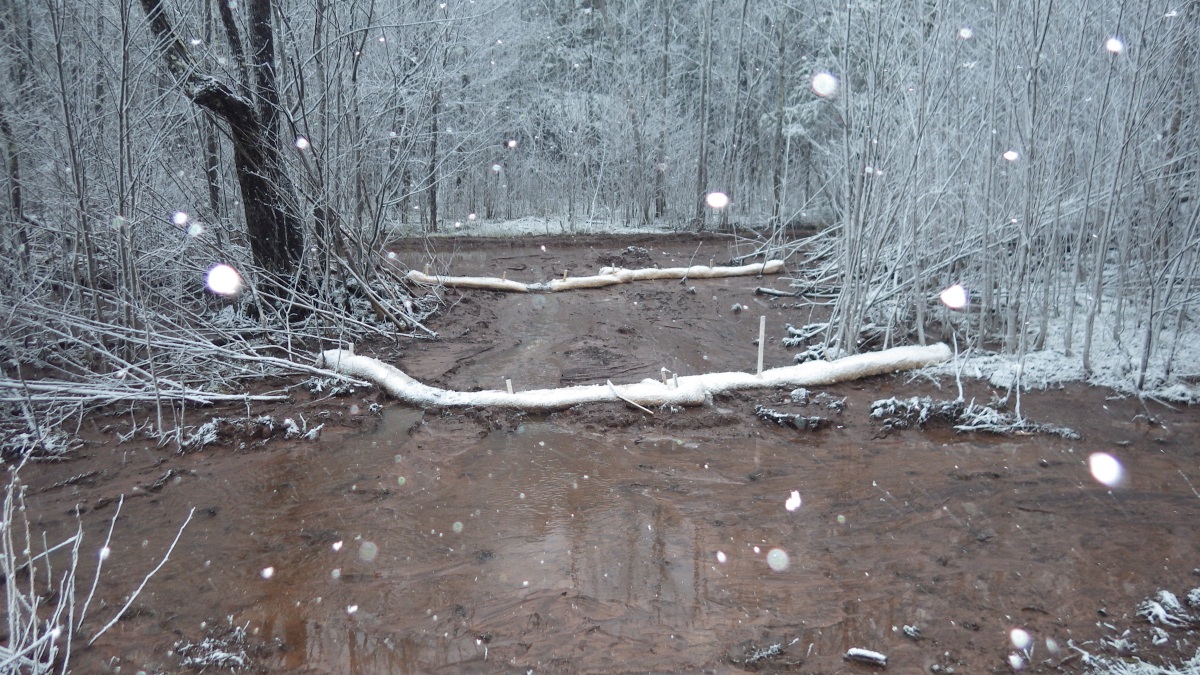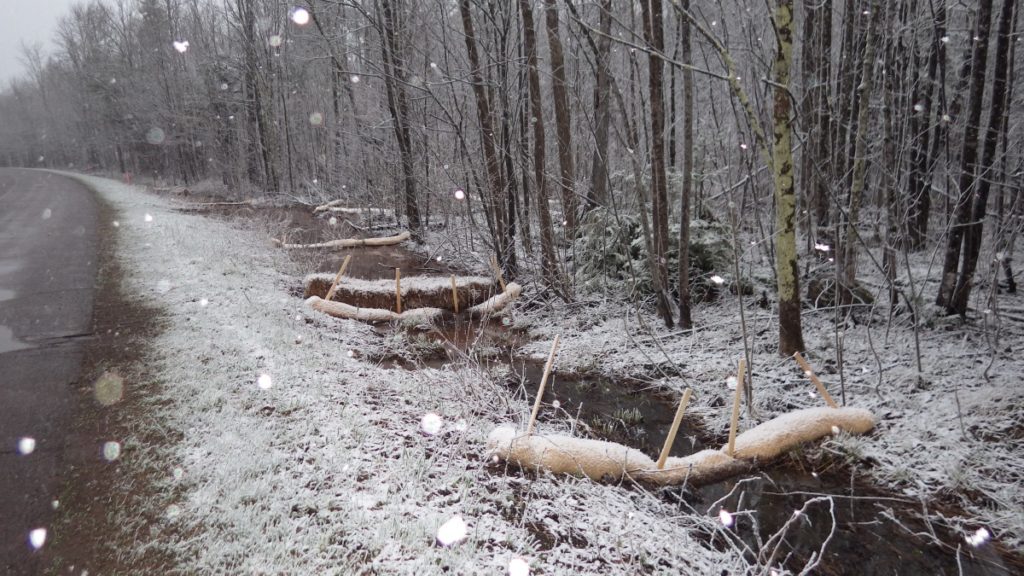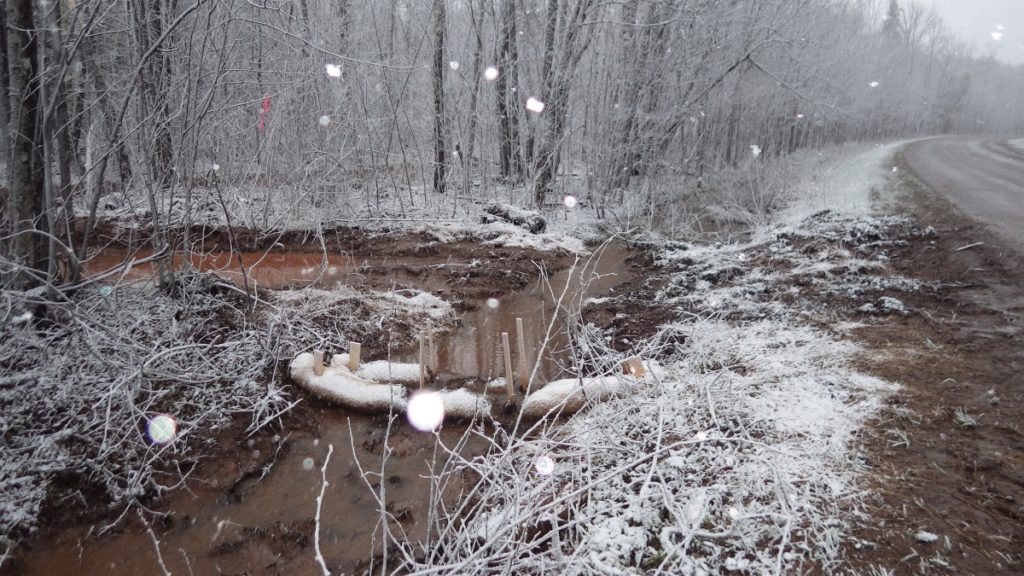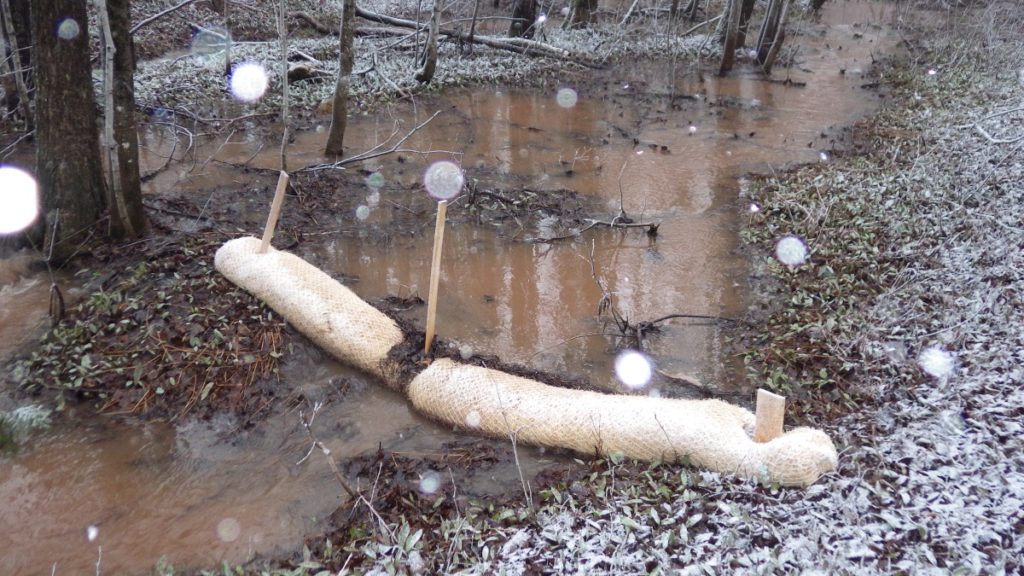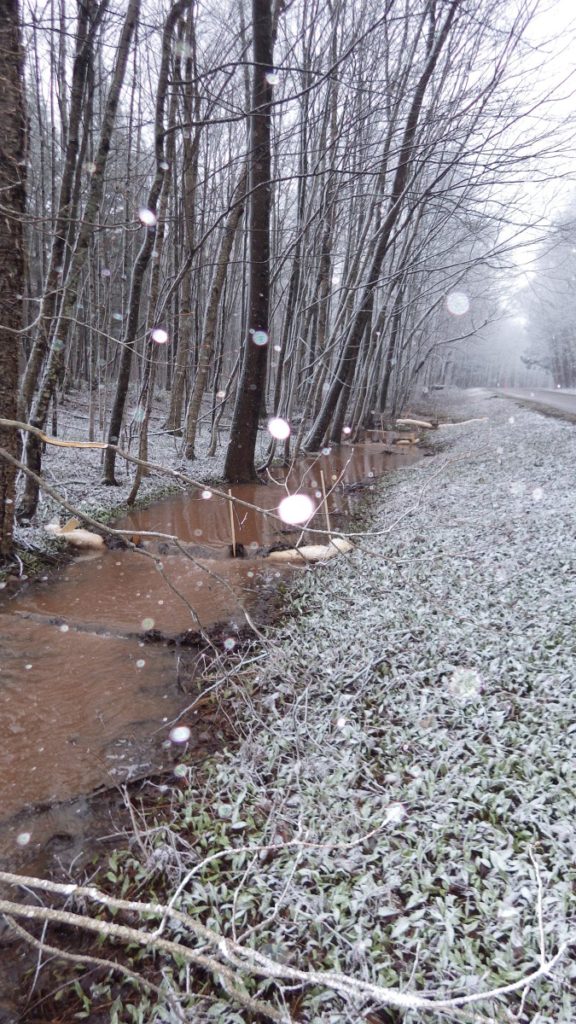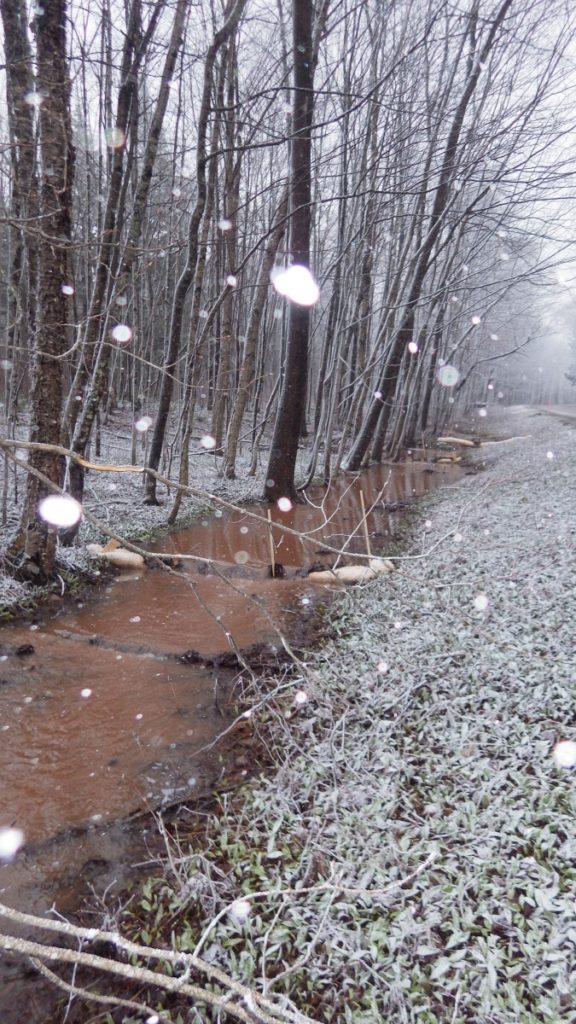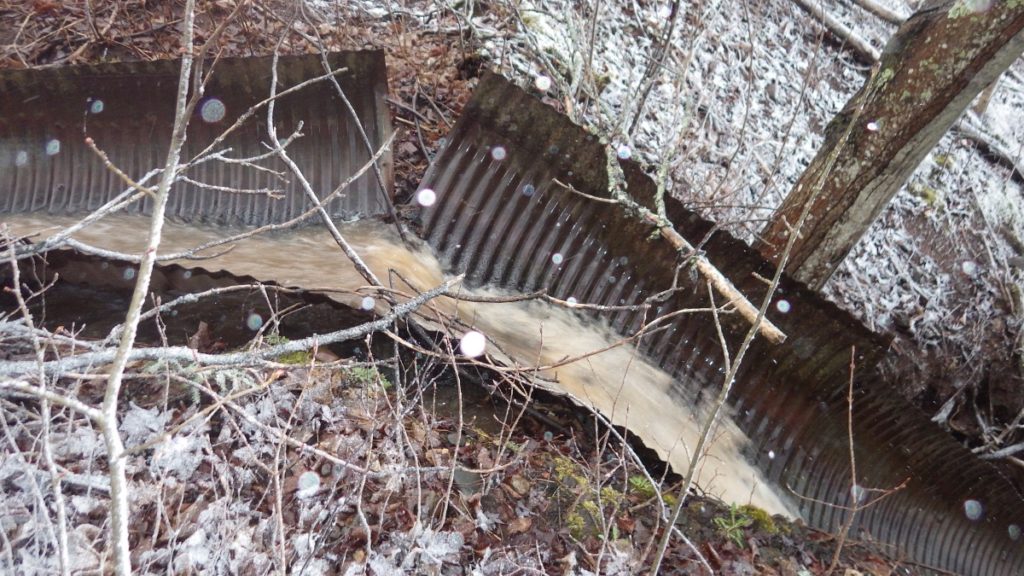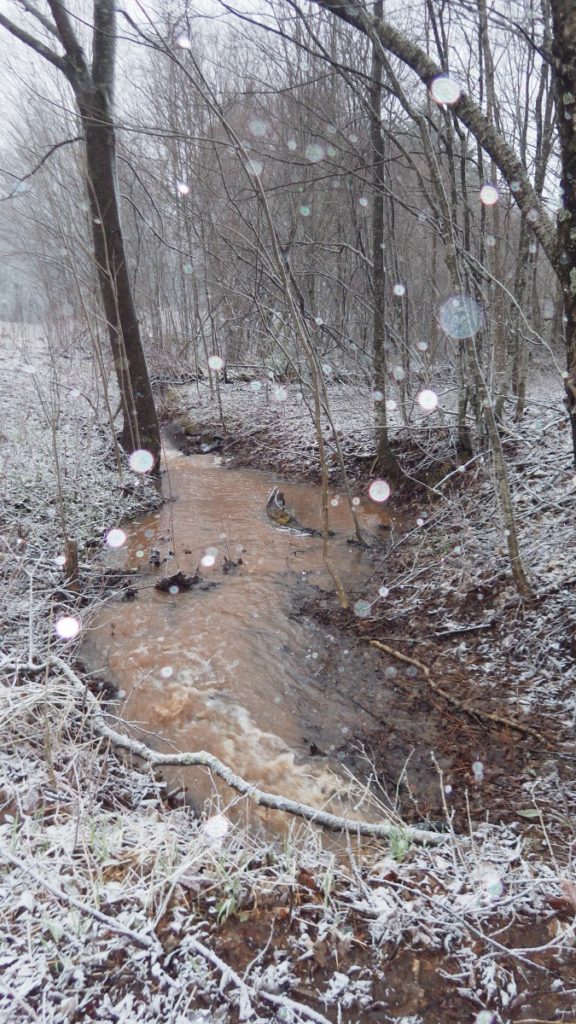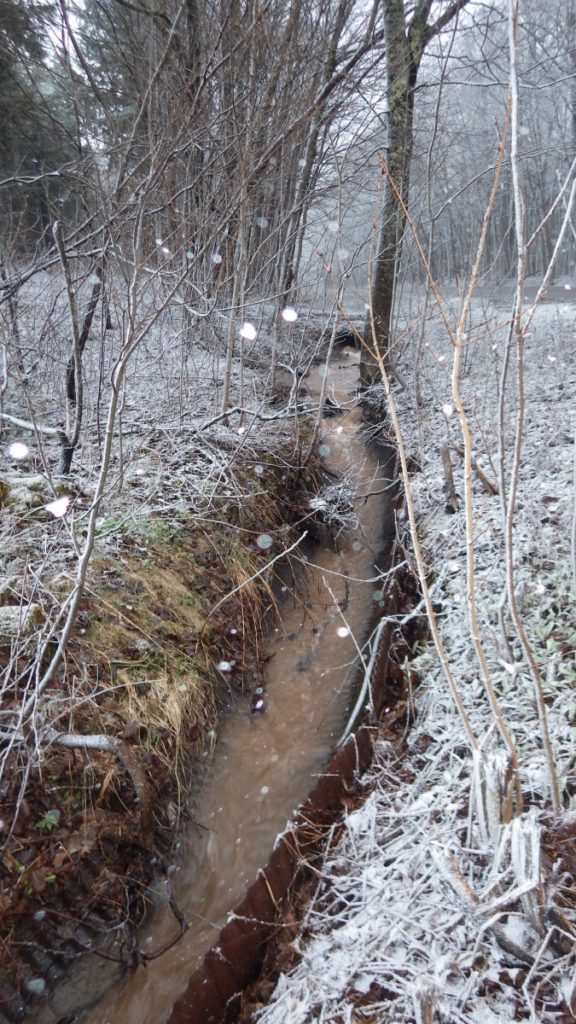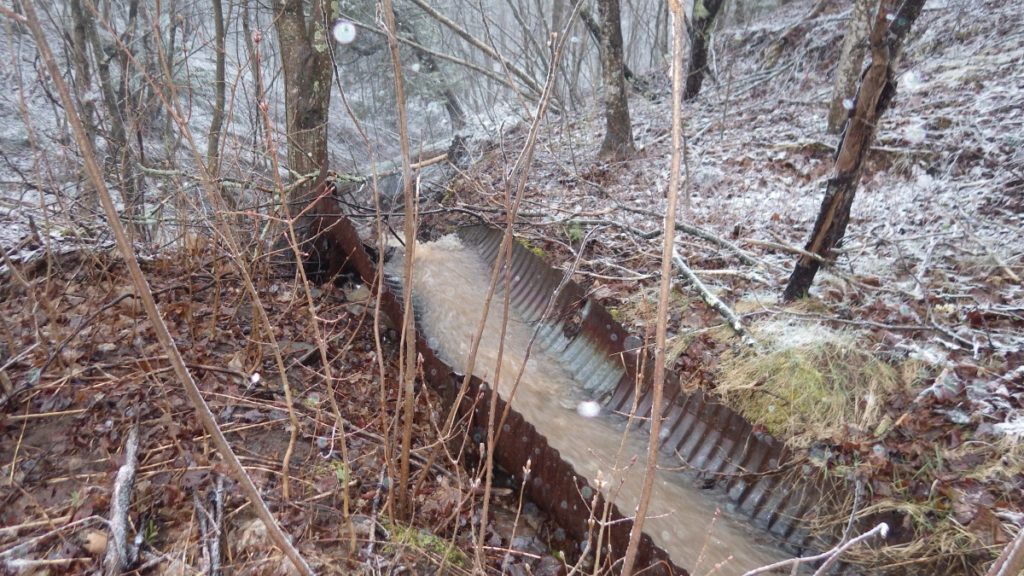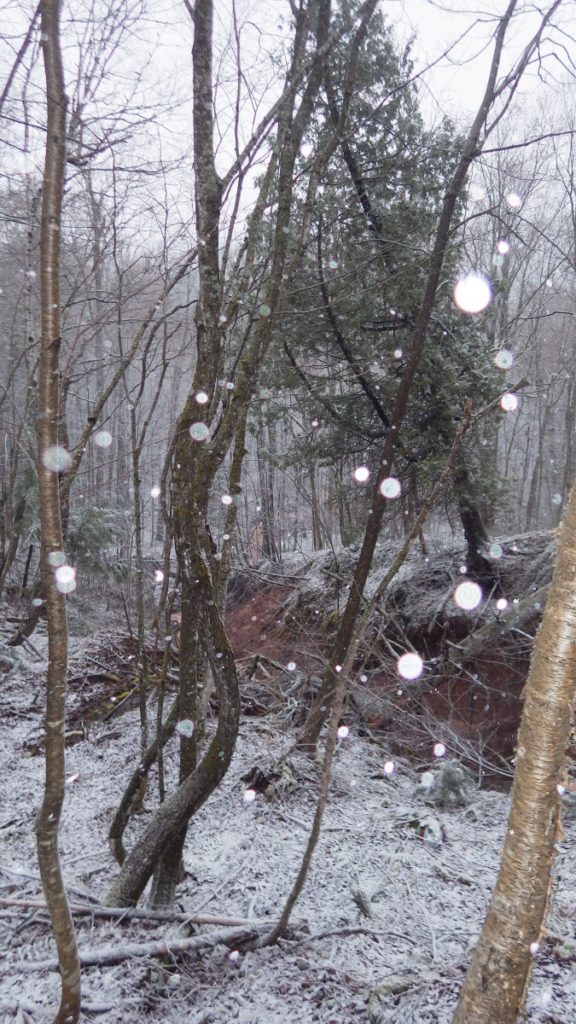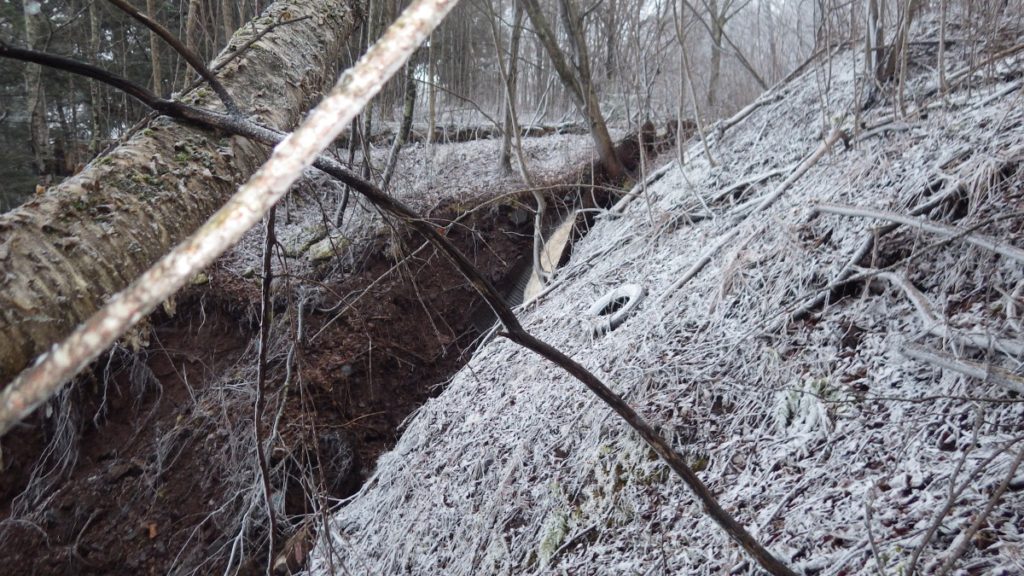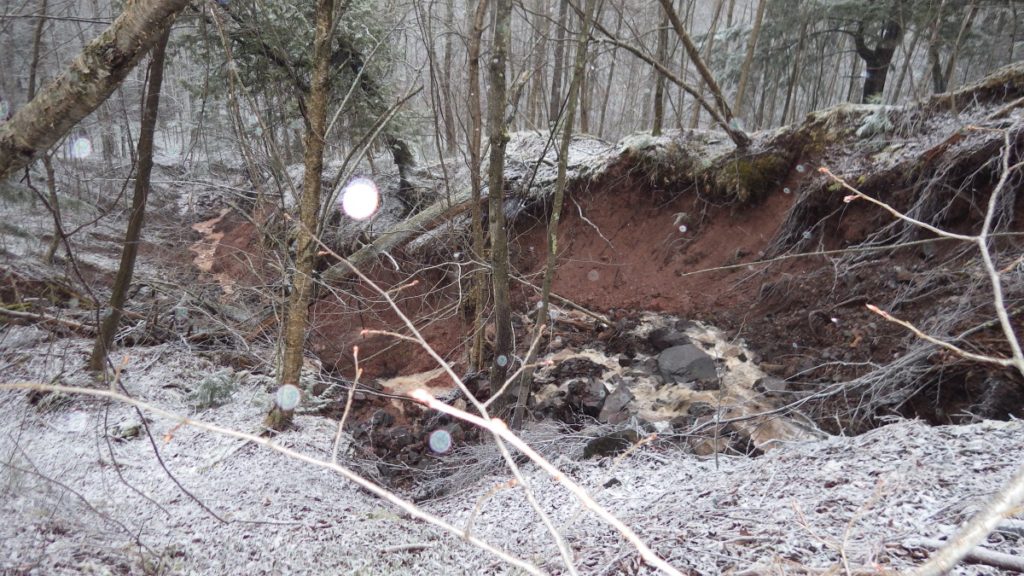MARQUETTE – Michigan landowners and environmental groups are calling for common-sense reforms of mineral leasing and severed mineral rights following a Public Meeting with the Michigan Department of Natural Resources’ Office of Minerals Management. Approximately 120 people attended the December 4th meeting, where growing frustrations were expressed over UPX Minerals’ requested lease of 2,500 acres of state-owned metallic minerals in Marquette County. The controversial UPX leases target “severed minerals” located underneath private surface lands — including private homes, camps and managed forest lands.
“We applaud Mark Sweatman, director of the DNR’s Office of Minerals Management, for responding directly to public questions, in a public forum. Unfortunately, that meeting raised more questions than it answered,” said Kathleen Heideman of the Mining Action Group. “Obviously, Michigan needs to change its management of state-owned metallic minerals. Landowners are getting trampled by the current system, and the widespread leasing of severed minerals threatens Michigan’s natural resources. It’s a Public Trust issue. The DNR’s primary duty is to ensure clean water and healthy ecosystems for all citizens, so environmental impacts need to be assessed before any decision can be made regarding the private, corporate use of public resources,” said Heideman.
UPX is seeking metallic minerals under lands that contain recreational trails, endangered species habitat, sensitive wetlands, and the remote Rocking Chair Lakes Natural Area, home to old-growth forest, two outstanding trout lakes, four Ecological Reference Areas, and one of Michigan’s tallest cliffs. Rocking Chair Lakes is a biological stronghold for “tree species that do not reliably recruit across the ecoregion” according to the DNR, and contains Michigan’s finest example of a “dry mesic northern forest.” The Rocking Chair Lakes provide some of the best habitat in the Great Lakes for “sensitive wildlife requiring large tracts of mature forest, mesic conifer or corridors between such areas.” Habitat fragmentation is a priority wildlife management issue, as the rugged preserve lies in the heart of Michigan’s moose range. The DNR’s own management plan lists mineral extraction as a “threat.”
“These are some of the most iconic landscapes found in the midwest. The Mulligan (Cliff) Wall and Mulligan Plains have no equal in local landscape awe, and cliffs near Echo Lake support peregrine propagation and habitat, just two significant examples of areas potentially affected by exploration and mining activity. Lease reclassification remains a subjective process, leading to possible development of lands and unacceptable habitat loss through fragmentation,” said Chauncey Moran, board chairman of the Yellow Dog Watershed Preserve.
“Working with impacted landowners and other stakeholders, we’ve identified serious problems with Michigan’s management of minerals and severed mineral rights,” said Horst Schmidt, president of the Upper Peninsula Environmental Coalition. “There is a growing consensus that legislative and process reforms are needed. We’re gathering feedback now, and look forward to pursuing mineral lease reforms in 2019.”
Among the ideas under consideration: that the State of Michigan should create a public database of mineral lease ownership; that all mineral rights ownership should be registered; that cumulative environmental impacts of mineral exploration should be assessed; that mineral owners should pay property tax; and that the DNR should offer surface landowners ‘first right of refusal’ – the option to purchase state-owned ‘severed minerals’ beneath their homes, camps and forests, prior to any lease consideration.
A fair and expedited path to reunify the severed estate would streamline the DNR’s management burdens, return stewardship control to private landowners, and better protect Michigan’s environment.
TAKE ACTION – SEVERED MINERAL RIGHTS
bit.ly/Reform-Mineral-Rights
“There is an overwhelming desire to give small landowners — 98 percent in our unscientific survey — a clear path to unified ownership of their land, both surface and underground,” said Jon Saari, a board member of the Upper Peninsula Environmental Coalition. “We can smell, hear, see and know the surface intimately, while the underground is a vast untouchable mass of buried minerals, known only through echoes and wave-lengths and core samples. Small wonder that this historical boon to mining interests known as the ‘dominant estate’ is getting looked at anew, and old assumptions questioned.”
“Currently there is a lot of confusion over mineral rights, and we need transparency. The phrase that catches my attention (in the DNR’s recent Press Release, “Digging into Severed Mineral Rights”) is this: “Determining who owns the minerals beneath your property can be an arduous task, but assistance can be acquired through an attorney or title company… once an owner is established, a mineral appraisal is typically completed to determine its value.” It is not right that determining mineral rights under my property should be an arduous task, requiring assistance from an attorney or title company. Mineral rights under private property should be apparent and spelled out clearly at time of purchase, and Michigan state laws should be changed to facilitate that,” said Brian and Julie Hintsala, local residents impacted by the UPX lease requests.
“The Superior Watershed Partnership is currently updating the Dead River Watershed Management Plan, expanding it to include protection recommendations for the entire watershed. In order to protect our freshwater resources and quality of life, we recommend a prohibition on sulfide-based mining within the Dead River Watershed,” said Carl Lindquist, executive director of the Superior Watershed Partnership.
Chris Burnett, speaking on behalf of the Upper Peninsula Land Conservancy’s Vielmetti-Peters Conservation Reserve in Marquette, was informed during the meeting that UPX had “withdrawn” the land conservancy’s property from their lease request. No explanation was given. Burnett questioned how the DNR communicated with impacted landowners, and whether the lease review process considered the value of renewable natural resources, worth substantially more than leasing fees.
UPX Minerals is a wholly owned subsidiary of Highland Copper, based in Canada. In 2017, UPX acquired nearly 500,000 acres of mineral properties in Michigan’s Central Upper Peninsula – lands formerly owned by Rio Tinto/Kennecott. UPX is reviewing historic mineral exploration data and conducting “field exploration” in search of gold, magmatic nickel-copper and zinc-copper deposits. Their goal is to “define drilling targets” and create a “pipeline” of future mining projects.
Comments opposing the UPX mineral lease requests were jointly submitted to the DNR by the Mining Action Group, the Upper Peninsula Environmental Coalition, Yellow Dog Watershed Preserve, Superior Watershed Partnership and Land Trust, Friends of the Land of Keweenaw (FOLK), Freshwater Future, Concerned Citizens of Big Bay, the Michigan Environmental Council, and the Michigan League of Conservation Voters.
Sweatman indicated the lease requests are still under review, and may be decided in early 2019. The public is urged to submit all questions pertaining to the UPX metallic mineral lease requests to the DNR’s Office of Minerals Management, P.O. Box 30452, Lansing MI 48909, or DNR-Minerals@michigan.gov
WHAT ARE PEOPLE SAYING?
“After listening to Director Sweatman discuss mineral rights and mineral leasing, I asked myself – what are you buying when you purchase real estate in Michigan? When the mineral rights are severed, it appears you have only the surface, maybe the air rights above it. And the right to pay property taxes! You’d be better off buying a magic carpet.”
– Horst Schmidt, president of the Upper Peninsula Environmental Coalition
“We built our family home on Neejee Road in 1992 primarily because we loved the natural beauty of the wooded lands near the McClure Basin. Other people appreciate the scenic beauty of the region also, because the old steel bridge and the new high bridge on Co. Rd. 510 over the Dead River are two of the most photographed areas in Marquette County. Imagine having a mine in the background of your next bridge photo! It is shocking to consider…. I am a life-long Yooper and I do appreciate the historical and current importance of mining to our area. However, we are much more than mining now. Tourism, mountain biking and cross country skiing in this area would be devastated by possible mining operations. Is it worth forever changing our landscape and risking our environment including the nearby Dead River basin for a short term mining operation? Why would the State of Michigan consider allowing mineral rights to be leased for exploration so near a community, in an area that will impact recreation and tourism?”
– Brian and Julie Hintsala, impacted landowners
“It is in our best interest to protect our watersheds from wide-scale ecological disruption, and look instead toward a future that allows our local economies to thrive because of the natural beauty that attracts people to our area.”
– Maggie Scheffer, board member of the Upper Peninsula Environmental Coalition
“Most of the threatened parcels are part of the Dead River watershed, which flows into Lake Superior just north of the city of Marquette. Contamination of this water would pose a great risk and expense. There are several dams along the river forming basins which have numerous waterfront developments. The value of these parcels would be seriously downgraded if the water is degraded. Property values would suffer, as would property taxes. Exploration is a messy business.”
– Kathy Peters, Marquette
“Rocking Chair Lakes are a hidden treasure in the valley of the Mulligan. The creek starts high up in wetlands near the McCormick Tract, tumbles down for miles through rugged hills onto an enclosed plain, and flows for five miles along the base of a 400-foot high rocky escarpment before emptying into the Dead River. While the beauty of Mulligan Creek was, and still is, apparent, the reality is that surrounding lands in the watershed are dominated by industrial forest owners…. PUBLIC LAND IS SCARCE: the State of Michigan owns 240 acres that encompass most of the Rocking Chair Lakes, a state wilderness area nestled high up within the escarpment itself. Road access is limited. This is no place for sulfide mining.”
– Jon Saari, board member of the Upper Peninsula Environmental Coalition
“Last fall some of us hiked into Rocking Chair Lakes Ecological Reference Area. This place has it all: old-growth cedar stands and hardwood forest, lush, misty valleys of old-growth hemlock nestled between high rock outcrops, and picturesque, undeveloped lakes. It’s hard to think of a worse place for mineral exploration and potentially a mine.”
– Steve Garske, board member of the Upper Peninsula Environmental Coalition
“Foreign mining companies see Michigan’s Upper Peninsula as a great place to operate: loosely regulated, full of metallic mineral deposits – a ‘you-pick’ orchard for sulfide mining companies. The State of Michigan, in its eagerness to permit resource exploration and extraction, risks turning the U.P. into a mining camp, and damaging our clean water and wild lands in the process.”
– Kathleen Heideman, Mining Action Group
“Recent scientific/medical research shows that increasing levels of mercury in the Lake Superior watershed are entering the human food chain by accumulating as poison in our game fish, creating a serious risk to human health, including irreversible brain damage in fetuses and children; and that the cause of this mercury poisoning is the toxic legacy of sulfide ore mining (silver, copper, gold, zinc). Our Michigan DNR now has the opportunity and responsibility as “Gatekeepers” acting as guardians of the public trust, to close the gate on further poisoning of our water and to protect our children and their children’s children by denying the sulfide mineral leases requested by UPX Minerals.”
– Dennis Ferraro, Marquette
“We are looking to our new governor to swiftly act in a manner that promotes our potential $6 billion annual renewable commercial fishery opportunity by restoring legacy mining pollution and casting aside this risky sulfide mining experiment.”
– Jeffery Loman, L’Anse Indian Reservation
LEARN MORE
- Take Action – Severed Mineral Rights!
- DNR Hears Input on Mineral Lease Request
- DNR to Hold Public Meeting on UPX Mineral Lease Requests
- Michigan DNR – Rocking Chair Lakes
- Environmentalists to DNR – Protect the Rocking Chair Lakes
####
Mission of the Upper Peninsula Environmental Coalition
Founded in 1976, the Upper Peninsula Environmental Coalition’s purpose remains unchanged: to protect and maintain the unique environmental qualities of the Upper Peninsula of Michigan by educating the public and acting as a watchdog to industry and government. UPEC is a nonprofit, registered 501(c)(3) organization. For more information, call 906-201-1949, see UPenvironment.org, or contact: upec@upenvironment.org.
Mission of the UPEC Mining Action Group
The UPEC Mining Action Group (MAG), formerly known as Save the Wild U.P., is a grassroots effort to defend the clean water and wild places of Michigan’s Upper Peninsula from the dangers of sulfide mining. Contact the Mining Action Group at info@savethewildup.org or call 906-201-1949. Learn more about the Mining Action Group at miningactiongroup.org.
